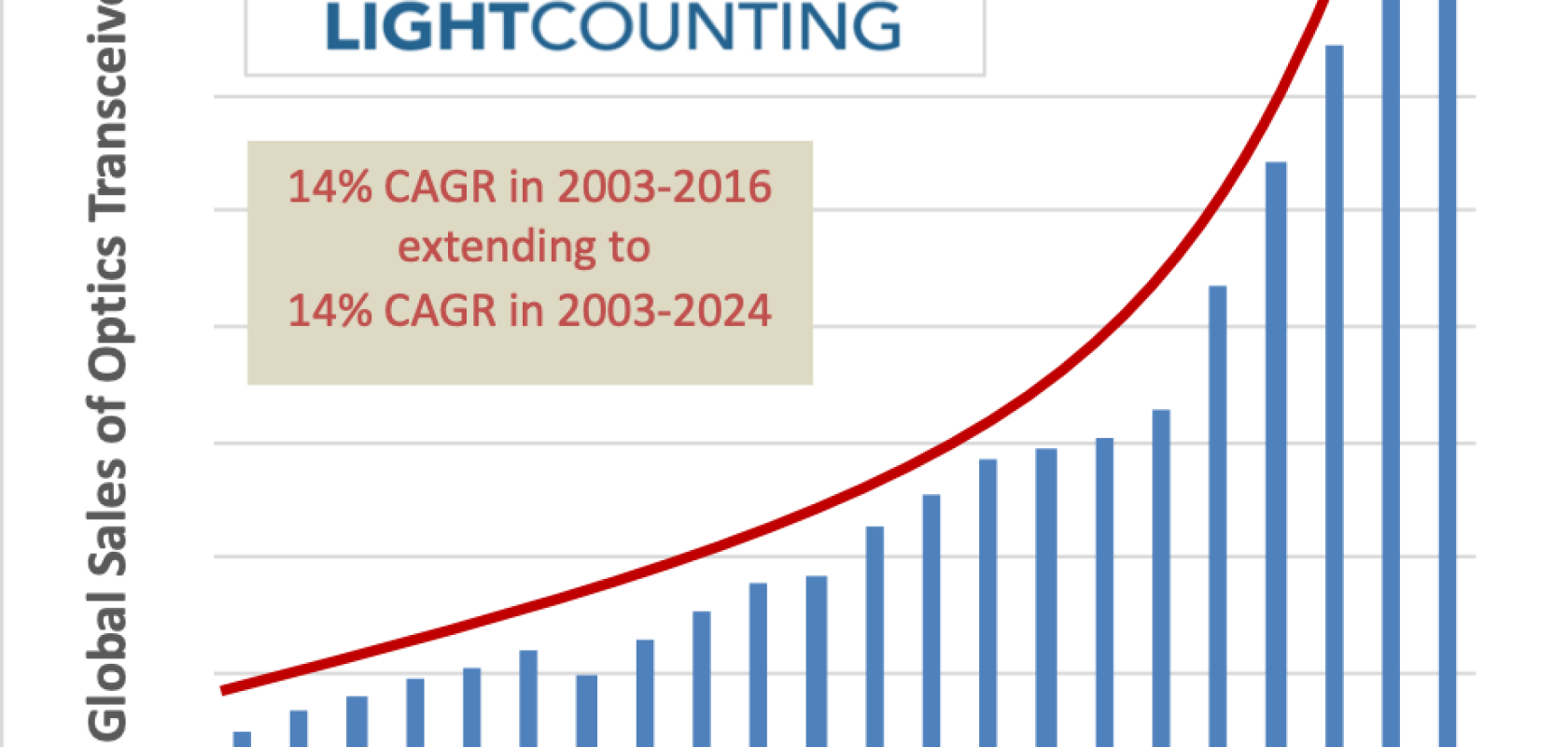LightCounting has released the April edition of its Optical Communications Market Forecast Report.
The report provides a detailed market demand forecast through 2024 for optical components and modules used in Ethernet, Fibre Channel, CWDM/DWDM, wireless infrastructure, FTTx, and high-performance computing (HPC) applications. This edition points out that the global optical transceiver market will be overdue for growth after two slower than expected years in 2017-2018 and most likely another slow year in 2019. It asks what it would take to put the market back on track for 20 years of 14 per cent CAGR for 2003-2024.
According to the research company, ‘it will not take much’. China and the US will need to reach a trade deal in 2019; deployments of 5G will roll out as expected; and shipments of next generation Ethernet modules, including 2x200GbE, 4x100GbE and 400GbE will reach decent volumes in 2020 and price declines in the Ethernet market return to their historical average.
The third wish on the above list, said LightCounting, is the most critical for the market growth in 2020-2024. Ethernet is already the largest segment of the global optical transceiver market and it is projected to account for 64 per cent of the total in 2024, up from 45 per cent in 2016.
Demand for 100GbE Ethernet transceivers was very strong in 2017-2018, but very steep price declines limited growth in sales revenue. Normalised average price of Ethernet transceivers declined from more than $6/Gb/s in 2016 to $3/Gb/s in 2018. Despite projected moderation in price declines in 2020-2024, the normalised price will drop to just above $1/Gb/s by 2024.
Annual price declines reached -37 per cent in 2018, beating 2011’s -33 per cent. The normalised prices drop more steeply as shipments of new higher speed product reach high volumes, said the report, as evidenced with 10GbE in 2011, 40GbE in 2014 and 100GbE in 2017-2018.
There are too many different next generation products on the roadmap now and, because of this fragmentation, none of the products will reach very high volumes. This will justify the kinds of price declines witnessed in 2018, which may not be great for customers, but may provide an overdue break for suppliers.
The LightCounting updated forecast includes revised projections for the wireless fronthaul and backhaul market to account for changes in deployment plans at China Mobile. It also presents an analysis suggesting that the percentage of fibre not equipped with optical transmitters (or dark fibre) increased in 2017-2018. A lot of this dark fibre will be used in the fronthaul and backhaul applications.
It includes a more detailed forecast for WSS modules as well as high-speed modulators and coherent receivers for DWDM applications. Demand for WSS modules increased sharply in 2018 mostly due to deployments of these modules in China. An increase in sales of pump lasers and fibre amplifiers is also a leading indicator for higher sales of DWDM transceivers, modulators, coherent receivers and tunable lasers in the next two to three years. This is consistent with the company’s forecast, but growth in sales of those products on a merchant market will be limited by internal manufacturing of these devices by the leading equipment suppliers, including Ciena and Huawei.


